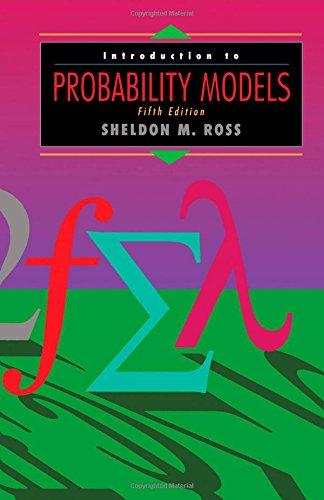11. Let Xx, X2,... be a sequence of independent random variables. The nonnegative integer valued random variable...
Question:
11. Let Xx, X2,... be a sequence of independent random variables. The nonnegative integer valued random variable Í is said to be a stopping time for the sequence if the event [N = n] is independent of Xn+i,Xn+2, the idea being that the Xt are observed one at a time—first Xx, then X2, and so on—and Í represents the number observed when we stop. Hence, the event [N = n] corresponds to stopping after having observed Xx, ...,Xn and thus must be independent of the values of random variables yet to come, namely, Xn+X, Xn+2
(a) Let Xx, X2,... be independent with P{X> = l}=P=l -P[Xi = 0}y i > 1 Define Nx = min{A2: Xx + ··· + Xn =
Which of the TV, are stopping times for the sequence Xx,... ?
An important result, known as Wald's equation states that if Xx, X2,...
are independent and identically distributed and have a finite mean E(X),
and if TV is a stopping time for this sequence having a finite mean, then Í
Ó x, = Å [N\E [×]
To prove Wald's equation, let us define the indicator variables /,·, / > 1 by 1, if/<7V 0, if é > Í
(b) Show that Ó Xi= Ó x,h é=1 i= 1 From part
(b) we see that E\
Í
Ó x> Ó Xih = Ó E[XtI,\
é = 1 where the last equality assumes that the expectation can be brought inside the summation (as indeed can be rigorously proven in this case),
(c) Argue that X-% and /,· are independent.
Hint: 7f equals 0 or 1 depending upon whether or not we have yet stopped after observing which random variables?
(d) From part
(c) we have Ó ÷ é = Ó E[X\E[IÙ
Complete the proof of Wald's equation.
(e) What does Wald's equation tell us about the stopping times in part (a)?
Step by Step Answer:







